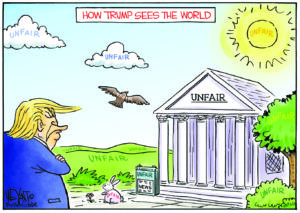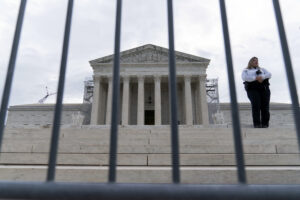How to Build a Quagmire
If you're wondering how $31 billion of US taxpayer money could be lost to fraud and waste in Afghanistan and Iraq, "Funding the Enemy: How U Taxpayers Bankroll the Taliban" by Douglas A Wissing is for you If you're wondering how $31 billion of U .
“Funding the Enemy: How U.S. Taxpayers Bankroll the Taliban”
A book by Douglas A. Wissing
Three years into the U.S. occupation of Afghanistan, Sen. Judd Gregg offered an unusual pronouncement on that year’s congressional budget negotiations. “This cannot afford to be a guns and butter term,” he told The Wall Street Journal, invoking the traditional trade-off between military and domestic spending priorities. “You’ve got to cut the butter.”
If Gregg’s prescription sounded harsh, the reality was even more dispiriting. In addition to its huge outlays on guns, the U.S. government was coating the entire country of Afghanistan in butter. For a decade now, we’ve spent $120 billion annually to occupy a nation whose GDP was less than one-tenth of that figure. Much of the funding has supported the military, of course, but a great deal of it was allocated for roads, schools, dams and hospitals — the very projects Gregg wished to cut here. A substantial fraction of that money never made it to Afghanistan as such. Large firms won fat contracts and subcontracted them to smaller firms, which subcontracted them to lesser companies in a cascade of skim. What dollars did arrive in Afghanistan funded low-quality construction and no maintenance. The occupation’s other big winners were Afghan kleptocrats, warlords and drug barons, who were busily presiding over a resurgent opium trade.
“It’s the perfect war,” one U.S. intelligence officer told author Douglas A. Wissing. “Everyone is making money.”
That irony wasn’t lost on our true enemy. As early as 2002, al-Qaida spokesman Abu-Ubayd al-Qurashi made a similar point. “Anyone who follows the news from Afghanistan will see how the different factions are playing with the Americans,” he noted. Those groups clearly intended “to prolong the flow of dollars as long as possible and are trying to strengthen their own interests without cooperating seriously in the American crusade.” His thumbnail description fits the facts surprisingly well.
This floridly dysfunctional system is the subject of Wissing’s remarkable book, “Funding the Enemy: How U.S. Taxpayers Bankroll the Taliban.” Drawing on a wide range of sources and adding his own firsthand reporting, Wissing describes how ousting the Taliban led to one of the most protracted and fruitless efforts in U.S. foreign policy history. If you’re wondering how $31 billion of U.S. taxpayer money could be lost to fraud and waste in Afghanistan and Iraq, this book is for you.
We haven’t aided the Afghan economy; we are the economy. Our very presence there has disfigured normal commerce and created perverse incentives. As Wissing notes, senior Afghan officials earn $150 a month while a nongovernmental organization driver earns $1,000. How long before those officials supplement their incomes with gifts (bakhsheesh) or become drivers? The full absurdity of the arrangement was revealed in miniature when Afghan farmers refused to clear their own canals unless we paid them.
Profiteering and corruption are common during wartime, but the situation in Afghanistan is appalling even by those standards. Outrageously, the Taliban itself has been a major beneficiary of our boodle. The shadow government was the only enemy in sight after al- Qaida evacuated in December 2001. A U.S. military office noted that 10 to 20 percent of funds from all international contracts in Afghanistan wound up with the Taliban. The Taliban even skims U.S. payments to families of Afghan civilians killed accidentally.
Funding the Enemy: How U.S. Taxpayers Bankroll the Taliban
Douglas A. Wissing
Prometheus Books, 396 pages
“Each of the projects, you have to pay the Taliban,” a political analyst told Wissing. “If you don’t pay them, you can’t do anything.” In 2009, even Secretary of State Hillary Clinton acknowledged that pattern: “There’s a lot of evidence that, in addition to funding from the Gulf and illegal narcotics trade, that siphoning off contractual money from the international community … is a major source of funding for the Taliban.” The government in exile was nothing if not resilient. “We know they are raising substantial sums of money; they can finance their operations,” a U.S. embassy official told Wissing. “If you take away the Gulf money, they can make it up. If you take away the narco money, they can make it up. It’s like punching jello.”
Even before we arrived, Afghanistan was one of the most corrupt governments on the planet, but the occupation intensified the graft. One study revealed that more than half of Afghan households had paid bribes to public officials in the previous six months, and that the average resident paid more than $100 a year in such bribes. Not a large figure, perhaps, but 70 percent of Afghan families live on $1 a day. The CIA-funded intelligence service in Afghanistan was also doing brisk business using a “catch and release” strategy with Taliban members. A Canadian law professor called Afghan intelligence officers “stunningly corrupt. They simply let the high-value Taliban walk — then torture the low-level Taliban to extort money from the families.”
Before 9/11, the Pentagon’s main problem with Afghanistan was its lack of targets. “When we looked at Afghanistan before,” one Clinton official noted, “the sense was we were going to bomb them up to the Stone Age.” Then came the invasion, which cost only $3.8 billion, and the snafu at Tora Bora, where Afghan warlords accepted $70 million to guard exit routes but still let al-Qaida slip across the border into Pakistan. By May 2002, we had spent $17 billion. But the invasion and occupation of Iraq, another freely chosen disaster, shifted American attention elsewhere and enabled the hustle in Afghanistan.
Our strategy hinged on civilian-military units called Provincial Reconstruction Teams, which were designed to maximize development, diplomacy and defense. It was the sort of nation building that George W. Bush had once scorned, and the results were poor. Hoping to help Afghan farmers, PRTs drilled countless wells, which created local squabbles and lowered water tables. “The only ones who benefit are the contractors who drill the wells,” one civilian official told Wissing. “They get paid lord knows how much to drill those things.” Concluded another observer, “We were worsening conflicts instead of mitigating them.” Nor did the U.S. presence halt the Afghan drug trade. Our allies included traffickers who opposed Taliban efforts to reduce poppy production. When asked about those alliances, Defense Secretary Donald Rumsfeld replied, “We don’t do drugs.” It was a neat line, but U.S. policies were effectively nurturing a narco state. By 2007, that unpleasant fact could no longer be ignored, and the Bush administration allocated $270 million to Helmand Province — which accounts for half of the nation’s narcotics production — hoping to provide an incentive to farmers to stop growing poppies. The initiative, Wissing notes, was “totally counterproductive.” The Taliban took over governance in major parts of the region, and poppy production continued. “Instead of a cheap, expeditious remedy,” Wissing concludes, “the American government’s confused Afghan drug trade policy contributed to the intertwined, codependent culture of corruption, aid and militarism that fueled the enduring war.”
Massive infrastructure expenditures likewise produced perverse results. “Afghan road construction became the great American boondoggle,” Wissing maintains, “and also an important source of financing for the Taliban.” He cites one high-profile project that began with a $665 million contract to produce 1,500 kilometers of roadway. International firms proposed to build the roads for $250,000 per kilometer, but Louis Berger Group got the nod at $700,000 per kilometer. Berger quickly subcontracted the project to Indian and Turkish firms, which built roads inferior to those laid by the Taliban. The insurgents promptly began shaking down travelers at new checkpoints and squeezing funds from Afghan officials and businessmen connected to the projects.
Despite the U.S. obsession with metrics, tracking our aid expenditures was beyond us. The military and the U.S. Agency for International Development used separate databases, and the latter organization had already become an ATM machine for contractors. In the 1990s, consultants recommended that USAID work be privatized; after the invasion, USAID programs expanded, but its hiring was so minimal that it outsourced even its oversight functions. As Sen. Patrick Leahy told an agency representative, “We routinely hear that … USAID has become a check-writing agency for big Washington contractors and NGOs … because you don’t have the staff to manage a larger number of smaller contracts and grants.” By 2010, there were 104,000 private contractors in Afghanistan — more civilians than soldiers. Note to war profiteers: Mission accomplished!
The price tag for all this? A Brown University study estimated that Afghanistan, Pakistan and Iraq will cost U.S. taxpayers $4 trillion. As our government cut infrastructure, education and human services here at home, it was paying for useless wells, substandard roads and empty schools in Afghanistan. One National Guardsman asked Wissing, “How can we spend hundreds of thousands of dollars — millions — here, when we can’t afford books for our own children?” Wissing adds that the $120 billion appropriated for Afghanistan last year would pay for 1.9 million elementary school teachers, 16 million Head Start slots or 15.5 million university scholarships. And that’s just the treasure. The human costs include 225,000 lives, countless shattered communities and families, and future fallout from American war crimes (including torture) committed in pursuit of our enemies.
Funding the Enemy: How U.S. Taxpayers Bankroll the Taliban
Douglas A. Wissing
Prometheus Books, 396 pages
Wissing’s unsparing account of waste, fraud and industrious self-delusion belongs on a short shelf of important books chronicling American misadventures since Vietnam. So far Wissing has escaped the criticism directed at Michael Hastings, whose Rolling Stone profile of Gen. Stanley McChrystal led to that officer’s removal in Afghanistan. Like Hastings, Wissing explores the fortunes of COIN, the counterinsurgency strategy administered by McChrystal and others. But Wissing is less interested in personalities and military culture than in the underlying folly of what both authors regard as an unwinnable war — or rather, an occupation that cannot be won or lost but certainly can be mismanaged and protracted beyond all reason.
Once upon a time, perhaps, the United States could afford to borrow and spend $4 trillion to thwart a relatively small network of terrorists. Al-Qaida’s strategy, according to Osama bin Laden, was to engage America in a “long, exhausting and continuous battle.” In 2004, the same year Gregg wanted to cut the butter, bin Laden said:
“All that we have mentioned has made it easy to provoke and bait this administration. All we have to do is send two [mujahedeen] to … raise a cloth on which is written al-Qaida in order to make the generals race there to cause America to suffer human, economic and political losses without achieving for it anything of note. … So we are continuing this policy of bleeding America to the point of bankruptcy.”
For our own dubious reasons, we did our part to fulfill bin Laden’s destructive prophecy. That decision haunts Wissing’s book and continues to weaken our republic.
Peter Richardson is the author of “A Bomb in Every Issue: How the Short, Unruly Life of Ramparts Magazine Changed America” (2009) and “American Prophet: The Life and Work of Carey McWilliams” (2005).
Editor’s note: Peter Richardson, while he was an editorial director at PoliPointPress, signed “Funding the Enemy” by Douglas Wissing, but the company folded before the book was released. Richardson had never read the manuscript and has never met Wissing.
Your support matters…Independent journalism is under threat and overshadowed by heavily funded mainstream media.
You can help level the playing field. Become a member.
Your tax-deductible contribution keeps us digging beneath the headlines to give you thought-provoking, investigative reporting and analysis that unearths what's really happening- without compromise.
Give today to support our courageous, independent journalists.







You need to be a supporter to comment.
There are currently no responses to this article.
Be the first to respond.